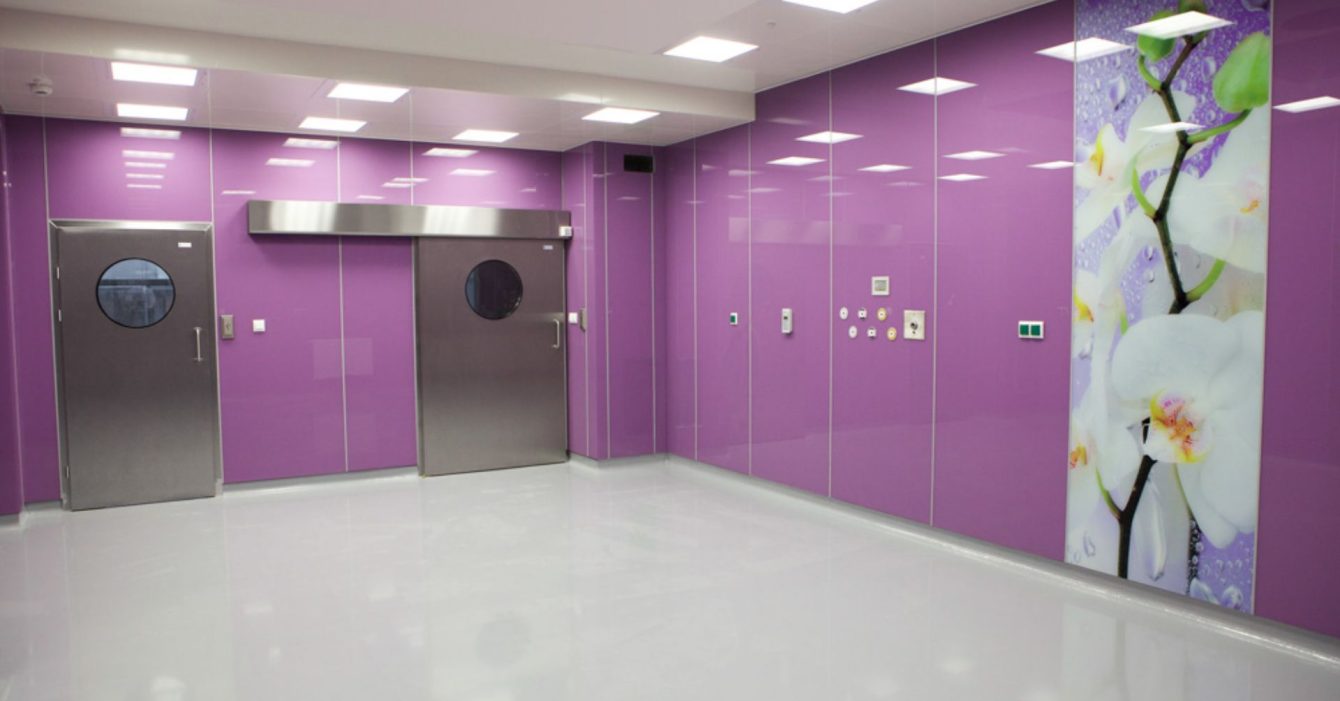A hospital is an institution that enforces strict standards of quality and, especially, hygiene. Due to the specific requirements of each hospital room, all equipment, furniture, and doors must adhere to the high standards and serve the specific purpose of that room. This ensures the safety and well-being of patients and healthcare providers.
That's why the doors used inside the hospital have unique characteristics. The solutions offered by Vertical Design cover a wide range of requirements, from radiology rooms, operating theaters, analysis laboratories, to kitchens. These doors are designed to meet the specific needs of each area within the hospital, ensuring safety, hygiene, and functionality.
Most of these doors are produced by Wiejak, an important partner of our company. Wiejak is a company that manufactures doors and access systems for the medical, construction, and food industry markets. Their products are known for their quality, safety, and compliance with the stringent requirements of these industries.
Radiology Rooms – X and Gamma ray resistant doors
In rooms where radiation-emitting equipment is used, radiology doors that seal the gaps in the interior walls must be installed. The solutions proposed by Vertical Design are radiology doors, equipped with copper/lead sheets on both sides, with different thicknesses depending on the specifications of the medical device. The frame on which the sheets are mounted is also radiation-resistant. Because lead/copper doors have a relatively heavy weight (approximately 33kg/sq m), hinges are essential to ensure the safety of patients and medical staff. Each anti-radiation door is a hygienic, sealed structure that complies with the most demanding standards specific to a healthcare institution. Additionally, radiology doors can also have a level of sound reduction and air permeability depending on the room's purpose.
Taking into account the specificities of the medical equipment in the protected room, the following can be configured: the frame, the sheet for manual or automatic pivot/sliding opening with "No touch" sensors. Additionally, insulated glass windows can be integrated according to the door's specification with the glazing frame on the door's face.
Operating rooms
Bacteria is ubiquitous and also responsible for various allergies and infections. Their presence poses a constant risk to both patients and healthcare professionals. Therefore, it is vital to maintain a sterile environment in the operating rooms, and doors play a significant role in achieving this goal. For operating rooms, we recommend the installation of hermetic/semi-hermetic sliding doors with an automatic closing system, specially designed for hospitals and clinics. Hermetic sliding doors provide touchless access and substantially contribute to preventing the spread of bacteria and infection-causing viruses. Depending on the internal room pressure, these doors can be produced with different permeability ratios.
These doors with foam-filled interior and tear-resistant perimeter gasket, which can be equipped with an invisible stainless steel frame, are designed for a large number of open/close cycles and have a very long lifespan. The doors are composed of thermally insulated panels and provide good bacterial protection thanks to the door panels being clad with HPL, electrostatically painted metal, or stainless steel. These doors are hygienic and easy to clean, and the floor guides they roll on are nearly invisible.
Operating the doors from the outside can be done through an alphanumeric display, a transmitter, or a magic switch – a contactless device that allows the door to be opened with simple hand movements, without touching. Depending on requirements, doors intended for operating rooms can also have other special features such as acoustic performance or radiological properties. Hermetic or semi-hermetic sliding doors can also be used in quarantine rooms, laboratories, workshops, clean rooms, or the pharmaceutical industry.
Laboratories, intensive care units – Antibacterial protection
For analysis laboratories and clean rooms that require special attention, Vertical Design can deliver and install antibacterial doors. These doors have an antibacterial HPL surface, coated with HC3, a system that, under the influence of UV rays, acts as a catalyst, triggering a physical mechanism to destroy simple organisms: bacteria, viruses, organic residues.
The handles of these doors are treated with silver ions, which prevent the development, spread, and transfer of microbes and bacteria.








